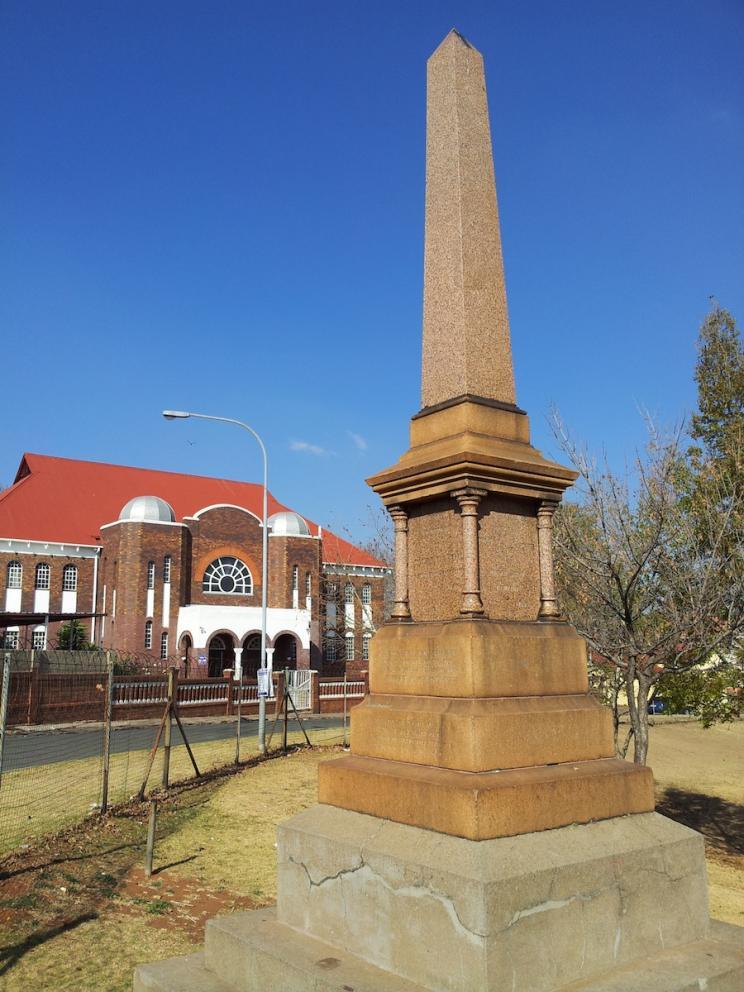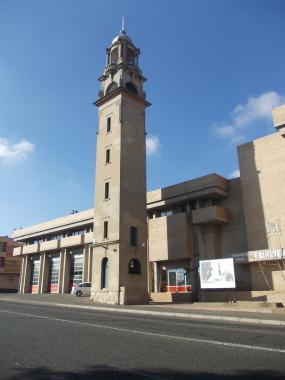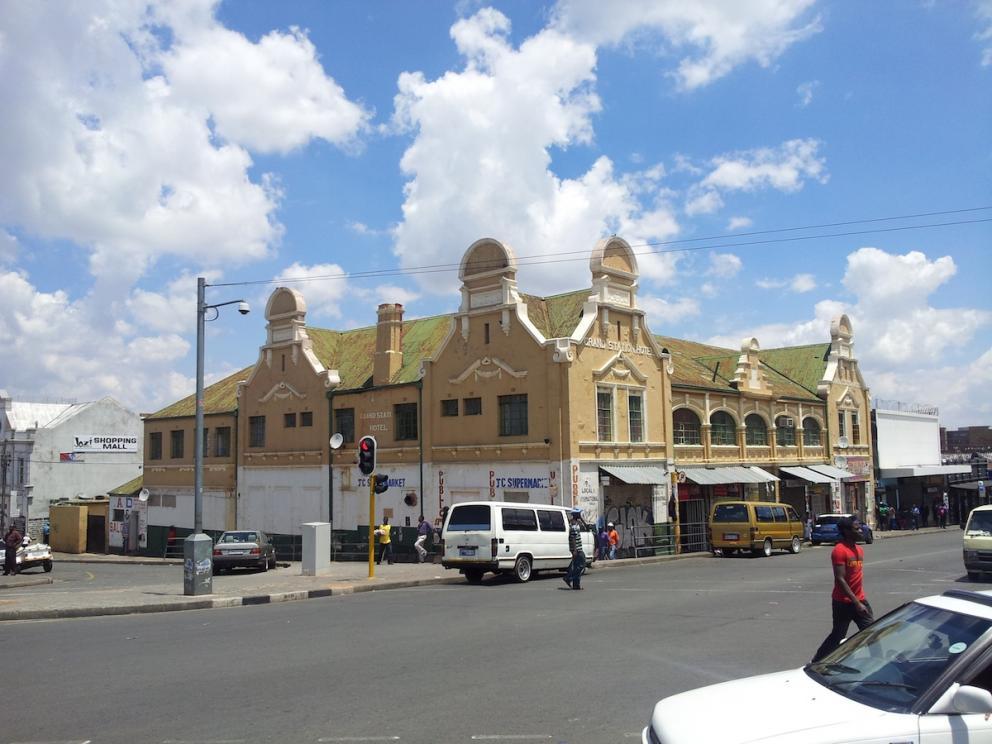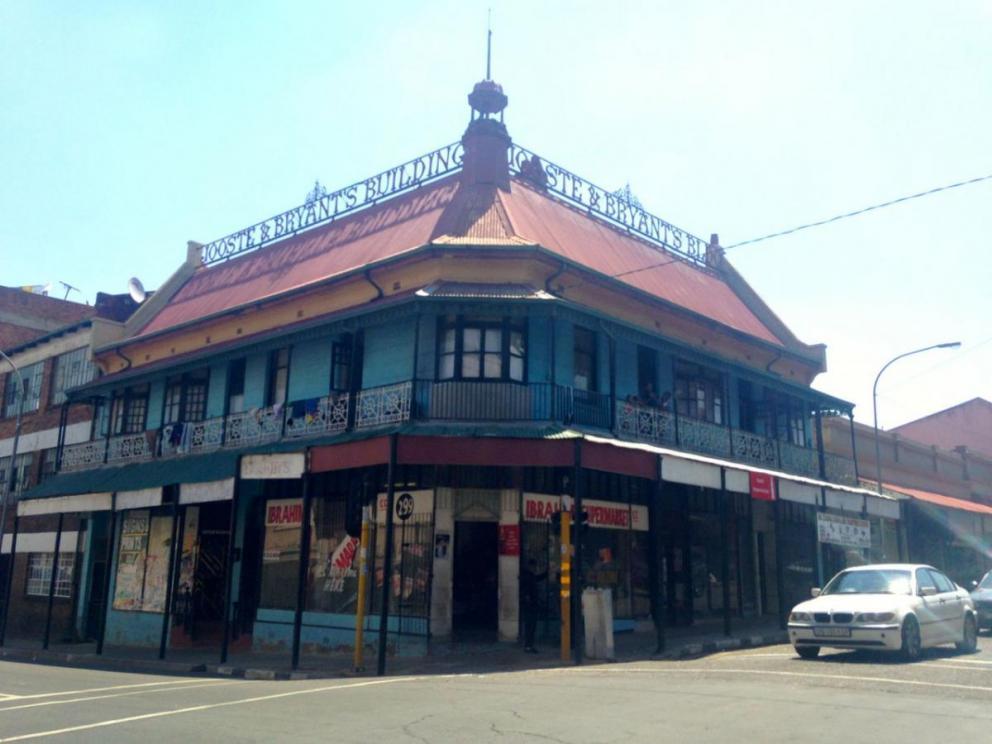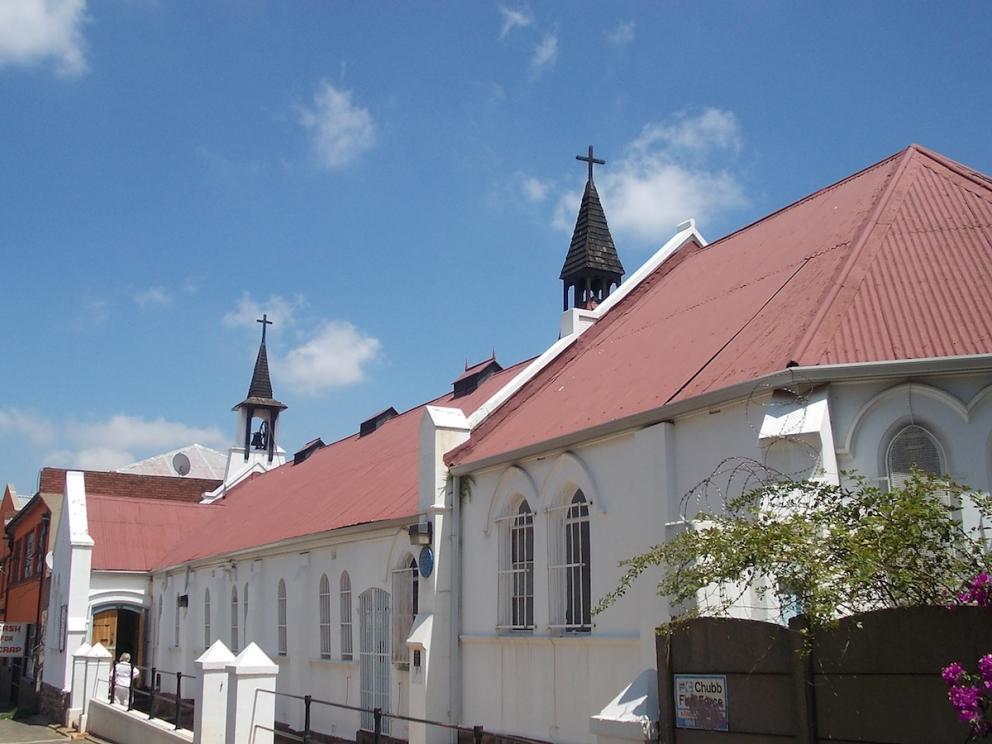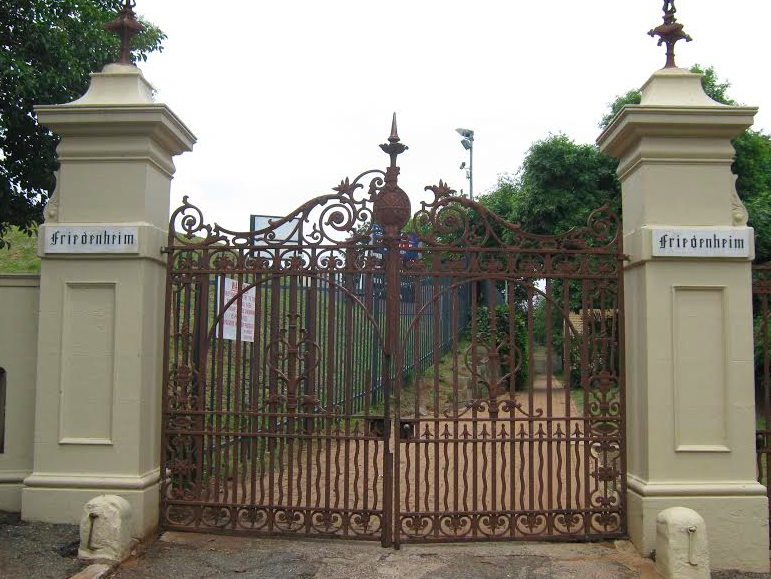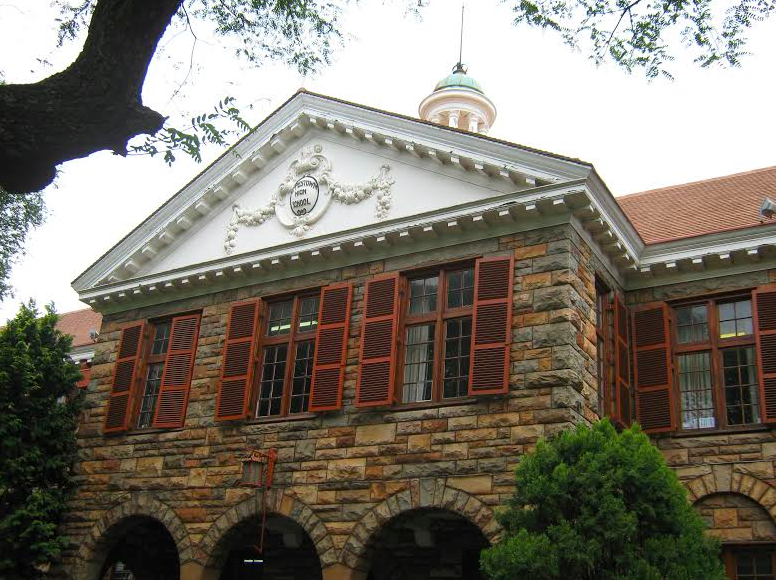
Disclaimer: Any views expressed by individuals and organisations are their own and do not in any way represent the views of The Heritage Portal. If you find any mistakes or historical inaccuracies, please contact the editor.
Five Jeppe men were prominent in the early history of the Transvaal and the Witwatersrand Gold fields. Three were brothers, two were the sons of the youngest brother. Two played significant roles in state administration, two were entrepreneur-businessmen and one was a jurist. But by enunciating these men’s foundation careers, is to tell only part of the story, for they all pursued a myriad of interests, involvements and occupations. All appeared assuredly capable of operating in a broad professional and public arenas.
All were born in Germany, in Rostock, Mecklenburg-Schwerin, on the Baltic, east of Hamburg. The three brothers were the sons of Carl Friedrich Wilhelm Jeppe who was economic adviser to the grand duke of Mecklenburg-Schwerin. It is safe to assume that all were well educated. The first Jeppe Migrant was Hermann Otto, born in 1819, who arrived sometime in the 1850s. In 1861, he was followed by his younger brother, Friedrich Heinrich and their sister Francina and her German officer husband, a Captain Dietrich. A third brother, Julius Jeppe arrived in 1870.
Why did the brothers come to South Africa? As facts and articulated motives are scarce, one can only speculate. Their journeys here began with Herman Otto, who wanted to practice medicine, but poor eyesight prevented this. Perhaps he learnt that given a shortage of medical men, regulations in South Africa might not be as strict? He came to Cape Town, where he worked for the prominent apothecary, Otto Landsberg, learning much medical lore in the process. He fell in love with Landsberg’s daughter, Mimi. The family did not approve. Mimi was invited to a reception at Government House where perhaps she enjoyed relative freedom from surveillance. Hermann gained access to the gathering disguised as a Malay waiter and from where the couple then eloped. They later proceeded to the Transvaal where Hermann began practicing medicine in Rustenburg. So we may speculate that the first Jeppe crossed the Vaal mainly because of an intense and romantic love affair rather than original intent, and that later, he attracted his brothers with intimation of rich opportunities in a land where skills were in short supply.
What do we know of the Transvaal in those far off days? It was a vast country, which, from round about 1840, was penetrated by Trekboer parties who were constantly squabbling among themselves and fighting with the black tribes who inhabited the area. Various trekker leaders established so-called republics in Potchefstroom in the south west, Ohrigstad in the east and Soutpansberg in the north. Ohrigstad was later abandoned for Lydenburg in healthier country.
We learn in A new History of South Africa by Gilliomee and Mbenga that ‘None of the independent stateliest wished too concede political control to another.’ In 1848, Andries Pretorius built up a following near modern Pretoria and in 1849 established a Volksraad for the whole Transvaal region. Marthinus Wessel Pretorius his son, was sworn in as first President of the ZAR at Potchefstroom in 1857. The economy of the ZAR was too weak to unify Boer society and foster the development of a modern state. The economy was based upon elephant hunting and subsistence farming on vast tracts. Markets and towns developed slowly. Burghers lived from hand to mouth and struggled to pay taxes. They often ignored commando call up. There was little in the way of education and the local population could offer few skills that could be developed by higher training. Many district officers were often rewarded with land rather than money. The British pound comprised the currency by default and educated foreigners played important roles in State administration.
Initially, Hermann did not function as a doctor in Rustenburg for long. After a brief spell as Rustenburg’s postmaster, he was appointed the first Postmaster-General of the Transvaal Republic and moved to Potchefstroom, where, for a short period, he also filled the post of acting State Attorney between September 1859 and May 1861. At the end of 1861 he resigned his postal job and returned to Rustenburg where he resumed his medical career. He was elected to the Transvaal Volksraad in 1866 and became the first Master of the ZAR Supreme Court in 1869. His career turned sour when in 1873, he was accused of embezzling money as a member of the Orphan Chamber commission. He explained the problem as being due to careless bookkeeping and handed all his property to the Government. He was nevertheless charged with public theft and fraud and dismissed from his post.
Impoverished, he left the Transvaal, and in 1881, was living with his second wife Rose Ellen Robinson and family on a farm close to the alluvial diggings on the Vaal near Barkly West. He died in Prieska in 1892.
Friedrich Heinrich Jeppe, who followed his brother to Potchefstroom in 1861, is described in the South African Dictionary of Biography as ‘a versatile Transvaal official, cartographer and artist.’ In 1863 he married Susanna Wilhelmina Truter in Rustenburg. In 1867 he became acting Postmaster General of the Transvaal Repubic. In 1868 Friedrich published his first article and a map of the Transvaal in Petermanns Geographische Mitteilungen. His later geographical/geological maps earned him the reputation of being the most important cartographer in the Transvaal. When he became Postmaster in 1868, he introduced mail-carts to the Free State and the British colonies. He designed and introduced the first postage stamps (1d, 3d, 6d, one shilling) to the country and used his younger brother Julius, to oversee their printing, in Germany. Friedrich was one of the founders of the Royal Philatelic Society in London.
Given the slow, animal drawn transport of the day, which rendered the Transvaal remote and distant from civilization, this appears unusual testimony to his own energy and obvious talent. In 1870 Friedrich began what was a steady stream of writings including a Transvaal Almanac and Jeppe’s map of the Transvaal or South African Republic and surrounding territories. His geographical publications earned him fellowship in the Royal Geographical Society. In 1886 he was asked to record all the Republics laws under the supervision of Chief Justice J G Kotze.
While working as chief draughtsman in the Surveyor General’s office, Friedrich Jeppe died in 1889 of a liver complaint and lies in Pretoria’s old cemetery. He was known as a modest man, quiet and unassuming, who did not dabble in politics. He belonged to the Lutheran Church in Pretoria and, as were all his brothers, a freemason.
Julius Jeppe the elder, together with his two sons Carl, the older brother, Julius and business partner LP Ford, envisaged great opportunities in the Witwatersrand gold rush from the very outset. Father Julius and the two grown sons worked in ‘sleepy’ Pretoria for some years, but, like countless others, gold fever lured them to Johannesburg. Carl, a lawyer, had been articled to Ford who was for a time the Republic’s Attorney General under Shepstone during the short British annexation (1877-1881). In 1886, the partners, moved their legal and estates business to Johannesburg. They hoped to find gold on their Randjeslaagte holdings, but like all others who had leased land on the original, triangular Johannesburg site, they were disappointed. However, cannily expecting Johannesburg to expand in both easterly and westerly directions, along the line of the reef, they leased and developed land in areas which became known as Fordsburg and Jeppestown. It is believed they ran a nursery in Fordsburg from which many of the city’s trees were purchased. Julius senior died in 1893 upon which his son Julius head of the business, while Carl pursued a legal career. Julius Jeppe senior is remembered by a monolith in the Jeppestown Oval and the family is commemorated by the historic Jeppe Schools (preparatory, boys’ and girls’ high schools) the Quondam sports club and old pupils’ associations worldwide.
The Jeppe Memorial (The Heritage Portal)
Carl Ludwig Theodor Abraham Jeppe, aged 17, fought in the Sekhukhune war as adjutant to Colonel Ignatius Ferreira. During the first Anglo Boer war he fought for the British in the Pretoria Carabineers. In 1885 he married Maria Albertina Juta. She bore a daughter and four sons. He became a partner in his father’s company, the Jeppe and Ford Estate Company. After further legal studies, Carl was called to the Transvaal Bar in 1890 and claimed the distinction of being the first Chairman of the Chamber of Mines. He was a founding member of the Rand Club. He represented Johannesburg in the Volksraad as a Progressive, fighting for Uitlander rights. President Kruger held him in sufficient esteem and trusted him sufficiently to appoint him to the committee charged with exerting control over the volatile Witwatersrand, after the Jameson Raid.
After the Anglo Boer War, during which Carl was arrested by the British but released on parole, he practiced at the Cape Bar. Serious illness brought him back to the Transvaal in 1908. In 1913 he was appointed a Judge of the Water Court and became one of South Africa’s greatest authorities on water rights and lawsuits. Carl was a member of the management board of Pretoria Zoo for 25 years. A talented writer, Carl authored The Kaleidoscopic Transvaal, about the early history of the country. He wrote short stories in both English and Dutch, thus highlighting the then fomenting language conflict. He died in Pretoria, in 1934.
Between Johannesburg centre, and Troyeville, lies historic Jeppestown, established as one of Johannesburg’s first suburb by the Jeppe and Ford estate partnership, on land leased from FJ Bezuidenhout and managed by Julius Jeppe the elder. To begin with, it was a residential suburb for the man limited purse but it became more up- market as it extended east of Belgravia, Johannesburg’s first boomed suburb. Jeppestown boasted the town’s first public library. In Fairview nearby, was situated a fire station for the eastern suburbs. Its prominent tower, now a city monument, was once the highest building in Johannesburg.
Fairview Tower (The Heritage Portal)
In later times, Jeppestown was developed as a light industrial area and today many of the former factory buildings house black migrants from Southern Africa and further afield. Walk along Main Street on a Saturday to appreciate the colorful vibrancy these immigrants bring to this part of the city. They shop at the many Asian Businesses which add their own character to historic Jeppestown. Prominent personalities such as Abe Bailey and the Jeppes lived in early Belgravia. Julius Jeppe the elder is commemorated by an obelisk, which still stands in Jeppe Oval. The Portuguese Church facing the Oval was originally one of Johannesburg’s early synagogues serving the large local Jewish population. Jeppestown and Belgravia were served by the horse-drawn tram service started in 1894. Jeppestown offers strollers a museum of the early architecture, particularly in the vicinity of Art Deco, Jeppe Station and opposite, one of Johannesburg’s oldest, the Grand Station Hotel, which once housed the well-known Norman’s Grill, famous for its prawn meals. The Historic Post Office designed by Paul Kruger’s architect and head of the ZAR Public Works Dept, Sytze Wierda, now contains butchery. The oh-so Victorian building recently painted in bright colors which housed Osborne’s Pharmacy, can be seen and appreciated on the corner of Marshall and Mackintyre Street and another Victorian landmark in far poorer condition, Jooste and Bryant Building, Stands on the corner of Marshall and Betty Street. Johannesburg’s oldest standing building, the Anglican Church, St Mary’s the Less, built in 1889, stands in Park Street, and remains well attended on Sundays.
Grand Station Hotel Jeppestown
Jooste and Bryant Building Jeppestown
St Mary the Less Jeppestown
The Jeppe schools originated in St Michael’s Collage, started in 1890 to provide English education for Uitlander children. The college struggled to survive and was ‘saved’ in 1890 by the Witwatersrand council of Education to which belonged Julius Jeppe and other wealthy financiers, and which purchased the school building on the corner of Crown and Op de Bergen Street. As a result of the donation of several plots of land to the Town Council, Julius Jeppe was able to impose the family identity upon the school that took St Michael’s place. In 1897 the school became known as Jeppestown Grammar but did not survive the Anglo Boer War. After the war the Transvaal educational authorities acquired the buildings of the old Jeppestown Grammar School and there established Jeppestown High School for boys and girls.
This school was one of the Milner Schools, designed to provide an ethos based upon a model combining English grammar school and private education. The present stone building in Roberts Ave, Kensington, designed by Ralston in the Herbert Baker, Arts and Crafts style, was occupied in 1911.
Julius (Gottlieb Ferdinand), the younger, born in 1859, was more closely associated with Johannesburg than his brother Carl. He was widely recognized as a mining and property magnate. He was knighted for his services to the developing town in 1922, and Jeppe Street, is named after him [now Rahima Moosa Street]. The catalogue of his public offices is extensive. During the Anglo Boer War he headed the Transvaal Red Cross. Despite the time he gave to public service, he remained a successful businessman merging, in 1905, his estate company with that of Abe Bailey, which became, in 1919, the South African Townships, Mining and Finance Corporation with Jeppe as Chairman and Managing Director.
Julius married Grace Cowen and they brought up five children, three sons and two daughters. The family lived in the mansion known as Friedenheim in Belgravia, which became one of Jeppe High School for Boy’s boarding houses, renamed Tsessebe.
Friedenheim Gates - Kensington Heritage
Sir Julius was a long-term member of the Town Council, and among many other activities, served on the executives of the Chamber of Mines, the Rand Water Board, and the Johannesburg Hospital Board and was Chairman of the South African Jockey Club. He was a trustee of the Hope Convalescent home and Chairman of the advisory board of the Children’s Undenominational Home. He appears to have been a man of extraordinary energy. One speculates that he must have employed a magnificent secretary or possibly several? Sir Julius chaired the Jeppe school board from 1918 until the end of this life. He died in London, in 1929. The Jeppe’s are buried in a family plot in Braamfontein Cemetery. Within the space lies also the grave of a beloved servant.
References
- The South African Dictionary of Biography.
- Who’s Who in Johannesburg 1908
- A History of Jeppe High School for Boys 1890-1990
- The Johannesburg Explorer Book by Mike Alfred and Peter Delmar
Comments will load below. If for any reason none appear click here for some troubleshooting tips. If you would like to post a comment and need instructions click here.

